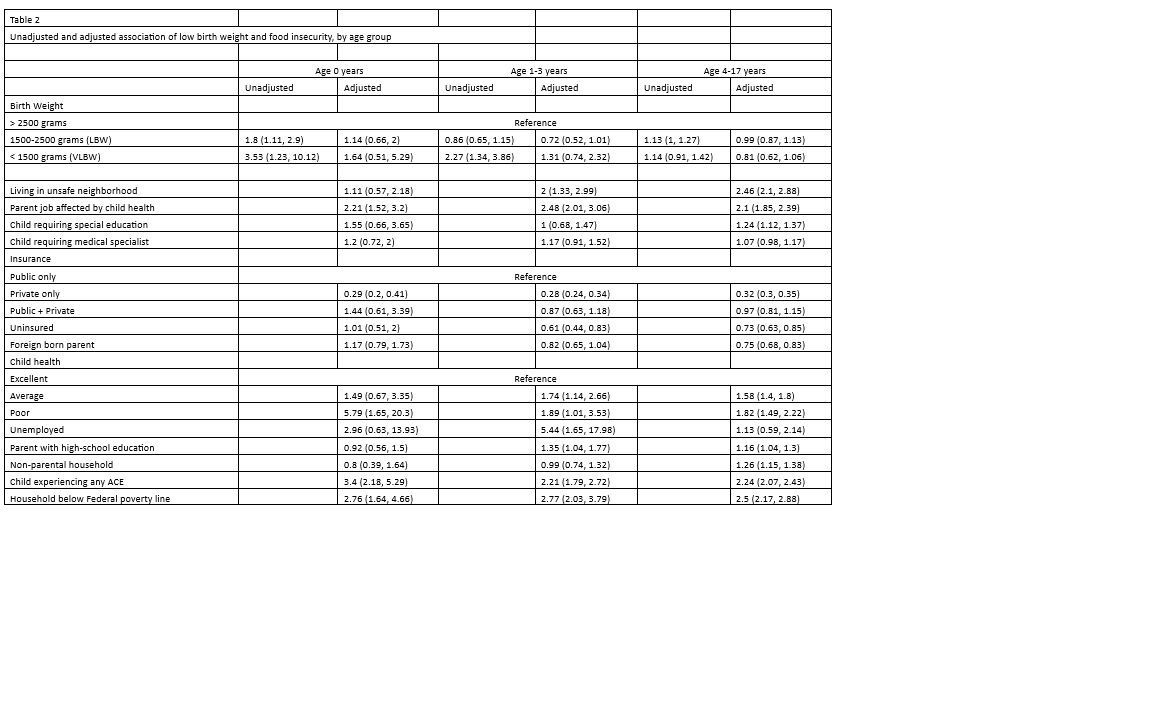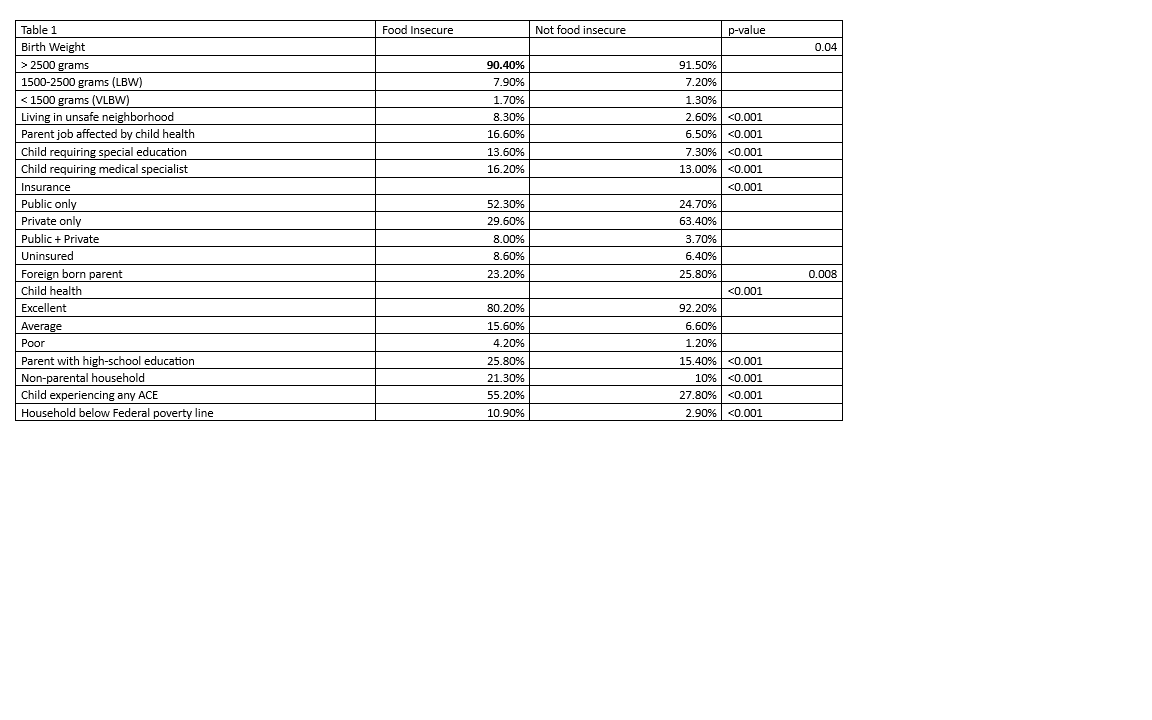Health Services Research
HSR 3: Social and Medical Complexity
588 - An Association Between Food Insecurity and Low and Very Low Birth Weight
Publication Number: 588.319

Kathryn Paul, MD (she/her/hers)
Fellow
Children's Hospital of Philadelphia
Philadelphia, Pennsylvania, United States
Presenting Author(s)
Background:
Food insecurity is a social stressor that may increase risk for low-birth weight (LBW) delivery, but the question of whether preterm birth changes social conditions to increase food insecurity (among other markers of poverty) has not been described in current literature. It is also unclear whether the association between birth weight and food insecurity persists over time.
Objective:
To determine the association between LBW and food insecurity, both in the year after birth, as well as the first three years of life and through childhood.
Design/Methods:
We used the National Survey of Child Health (NSCH) to construct a cohort of children in the US from 2016-2020. Birth weight for the index child was classified into three groups: normal ( > 2500 gms), low birth weight (< 2500 grams, LBW) and very low birth weight (< 1500 grams, VLBW). Families were defined as food insecure (FI) if they reported “sometimes or often they could not afford enough to eat” or “it has been hard to cover basics, like food or housing, since child was born”. Multivariable logistic regression analysis determined the association between VLBW and LBW delivery and food insecurity after controlling for social and economic factors, stratifying by the age of the child (0 years, 1-3 years, 4-17 years). All results accounted for the complex sampling nature of the NSCH and report population estimates.
Results:
Among children in the US between 2016-2020, an estimated 19.2% report food insecurity, 7.3% were LBW, and 1.4% were VLBW. VLBW infants had a higher incidence of food insecurity that is strongest closest to birth (41.4% v. 26.4% of LBW infants and 16.7% normal weight infants, p< 0.0001), but persists through childhood (Figure 1). Food insecurity was associated with other socioeconomic indicators of low income and poor health (Table 1). After adjusting for these factors, the association between birth weight and food insecurity was attenuated. Multivariable regression (Table 2) found that with the addition of these risk factors, the increased odds ratio falls away, while other risk factors maintain an association with food insecurity. This suggests that the same risk factors that cause food insecurity are associated with LBW and VLBW.
Conclusion(s):
Low birth weight infants were more likely to experience food insecurity in the year of birth and throughout early childhood, likely driven by social factors that impact the risk of both a low birth weight delivery and food insecurity. Pediatricians caring for a formerly LBW or VLBW infant should monitor for food insecurity and other markers of poor social conditions..png)


